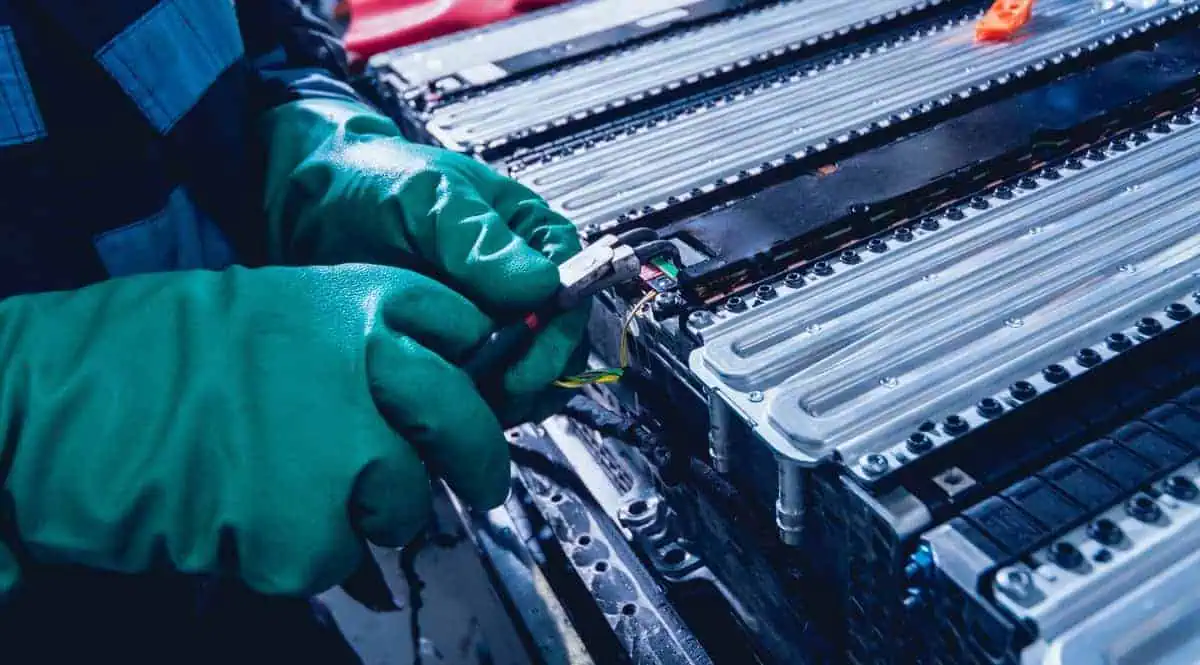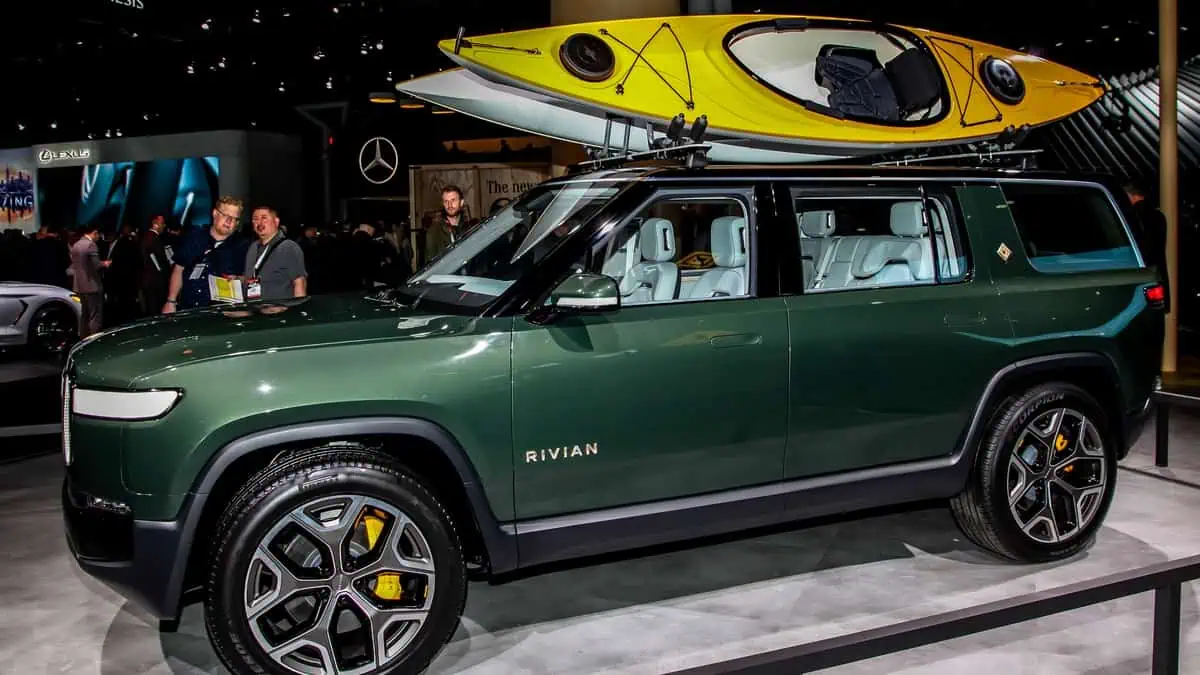In the first half of 2022, the global passenger xEV battery market—which includes BEVs, PHEVs, and HEVs—continues its exponential expansion, as per InsideEVs.
The battery capacity of xEVs passenger sales
Adamas Intelligence reported that all newly sold passenger xEVs had around 195.5 GWh of battery capacity installed worldwide during the first half of 2022. It represents a 79% increase from a year ago.
However, it must be noted that the figures above do not include batteries for energy storage devices, commercial xEVs, or other applications.
Remarkably, the 195.5 GWh battery capacity this year is significantly greater than the 286 GWh deployed in all of 2021 and the 134.5 GWh delivered in 2020.
Battery-electric vehicles account for 89% of all xEV batteries deployed, based on the “State of Charge: EVs, Batteries, and Battery Materials” report.
On the other hand, non-rechargeable hybrids are just 1% because they only have a small battery capacity:
| xEV categories | Battery capacity |
| BEVs: | about 19.6 GWh (10% share, down from 11% a year ago) |
| PHEVs: | about 2.0 GWh (1% share, down from 2% a year ago) |
| HEV: | 195.5 GWh (up 79% year-over-year from 109.0 GWh a year ago) |
| xEV: | |
| Geographically (percentage): Asia Pacific: Europe: Americas: Other: | 58% (113 GWh), up from 48% a year ago 25% (48.1 GWh), down from 33% a year ago 17% (33.4 GWh), down from 18% a year ago 1.1% |
Check the first image below:
Top xEV battery cell manufacturers
CATL is the industry leader in battery cell production, as seen in the third image in the Tweet above. China’s BYD follows the second-placer LG Energy Solution. Meanwhile, the top seven companies dominate over 82% of the market.
| Ranking | Company | Market share |
| 1 | CATL: | 64.9 GWh (33% market share, up from 27% a year ago) |
| 2 | LG Energy Solution: | 33.8 GWh (vs. 27.9 GWh a year ago) |
| 3 | BYD: | 24.4 GWh (up more than three times from 7.1 GWh a year ago) |
| 4 | Panasonic | n/a |
| 5 | SK Innovation’s SK On | n/a |
| 6 | Samsung SDI | n/a |
| 7 | CALB | n/a |
| 8 | Gotion | n/a |
| 9 | Farasis Energy | n/a |
| 10 | Envision AESC: | below 2.0 GWh |
Top battery chemistry for passenger xEVs
Lithium Iron Phosphate (LFP) is now the most widely used single li-ion battery chemistry for passenger xEVs, as seen in the fourth photo on the tweet above. In the meanwhile, the NCM family (nickel-rich cathode), in general, continues to predominate:
| Ranking | Battery Chemistry | Market share |
| 1 | LFP: | 52.7 GWh (27% share, up 237% year-over-year) |
| 2 | NCM 5-series: | 41.6 GWh (21% share) |
| 3 | NCM 8-series: | 36.2 GWh (19% share) |
| 4 | NCM 6-series: | about 23.5 GWh (12% share) |
| 5 | NCA Gen 3: | about 19.6 GWh (10% share) |
| 6 | NCM 7-series | n/a |
| 7 | NCM 111 | n/a |
| 8 | NCM/LMO | n/a |
| 9 | NiOH | n/a |
| 10 | LMO: | below 1.0 GWh |
xEV registrations vs. battery deployment
There were 6.23 million new passenger xEV registrations, according to the report for the first half of the year. From 4.40 million in H1 2021, it went up to 42% YoY.
Additionally, it should be noted that the market for all-electric vehicles is progressively gaining traction:
| xEV categories | Registrations |
| BEVs: | about 3.05 million (49% of all xEV, up from 40% a year ago) |
| PHEVs: | about 1.18 million (19% of all xEV, down from 20% a year ago) |
| HEV: | about 1.99 million (32% of all xEV, down from 41%) |
| xEV: | 6.23 million (up 42% year-over-year) |
| *in Asia Pacific, the growth amounted to 75% year-over-year |
Once more, the growth of xEV sales lagged behind the rise of the battery market. It is expected as xEV sales are increasing and plug-in electric cars are frequently outfitted with increasingly larger batteries.
Adamas Intelligence reports that the combined worldwide sales-weighted average battery pack capacity of all recently sold passenger xEVs was 31.4 kWh. It saw a slight increase from the 24.8 kWh the previous year.
In addition, average battery pack sizes were computed for each category in the study. However, the results may be inaccurate by one or two percentage points:
| xEV categories | Battery capacity |
| BEVs: | about 57 kWh |
| PHEVs: | about 16.6 kWh |
| HEV: | about 1 kWh |
| xEV: | 31.4 kWh (up 27% year-over-year from 24.8 kWh) |
Battery materials
Interestingly, the LFP chemistry growth at the detriment of NCM substantially constrained the increase of consumption of critical minerals for electric vehicle batteries. It includes nickel, cobalt, and manganese.
- lithium carbonate equivalent (“LCE”) – 117,200 tonnes (up 76% year-over-year)
59% as carbonate, 41% as hydroxide
*average: about 0.6 kg/kWh, about 18.8 kg/xEV (up 24%) or 34 kg/BEV - nickel – 88,200 tonnes (up 50% year-over-year)
*average: about 0.5 kg/kWh, about 14.1 kg/xEV (up 6%) - cobalt – 18,500 tonnes (up 44% year-over-year)
*average: about 0.1 kg/kWh, about 3.0 kg/xEV (up 2%) - manganese – 23,700 tonnes (up 44% year-over-year)
*average: about 0.1 kg/kWh, about 3.8 kg/xEV (up 2%) - graphite – 177,200 tonnes (up 86% year-over-year)
*average: about 0.9 kg/kWh, about 28.4 kg/xEV (up 32%) - * average numbers are only briefly estimated (not all xEVs use particular elements)






